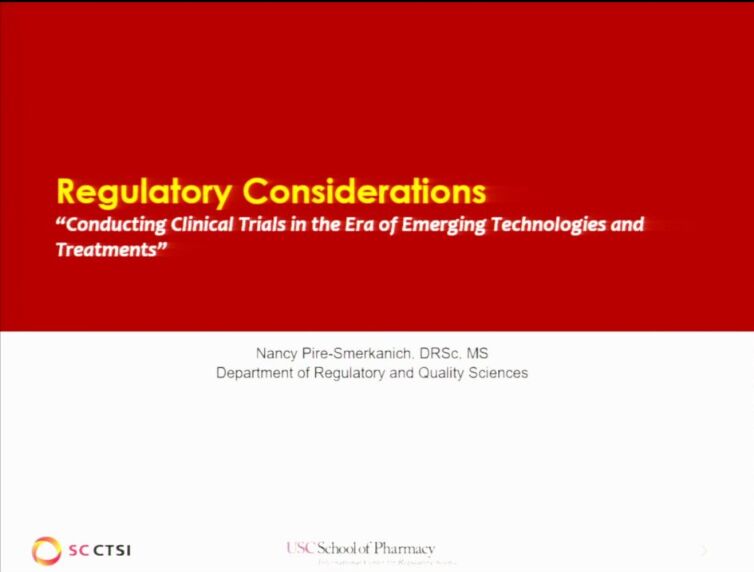Emerging fields such as gene therapy, cell therapy, tissue engineering, innovative medical devices and innovative information technology can all present challenges to regulators who may not be ready to evaluate new products.
Current US FDA regulatory activities include:
- FDA Safety and Innovation Act (FDASIA, 2012)
- FDA Reauthorization Act (FDARA, 2017)
- 21st Century Cures Act (2016) – Regenerative Medicine Advanced Therapy (RMAT) Designation (i.e. Gene Therapies)
- CDER Emerging Technology Team
- CBER Office of Tissues and Advanced Therapies (OTAT)
- Critical Path Institute
- New precedent (e.g. Keytruda)
- Guidances
- Regulatory Pathways and Science
FDA’s Newest Regulatory Pathway:
- Regenerative Medicine Advanced Therapy (RMAT)
- Breakthrough Therapy Designation
FDA Emerging Technology Team (ETT):
- Goal to promote the adoption of innovative approaches to pharmaceutical product design and manufacturing
- Focus on regulatory quality assessment of novel technologies
FDA Guidance for industry:
- Considerations for the Design of Early-Phase Clinical Trials of Cellular and Gene Therapy Products
- Advancement of Emerging Technology Applications for Pharmaceutical Innovation and Modernization
- Recommendation for Microbial Vectors used for Gene Therapy
- Deviation Reporting for Human Cells, Tissues, and Cellular and Tissue-Based Products Regulated Solely Under Section 361 of the Public Health Service Act and 21 CFR Part 1271
- Preclinical Assessment of Investigational Cellular and Gene Therapy Products
FDA Strategic Plan for Regulatory Science:
- Addition of genomic information to drug labels
- To identify patients who will most benefit from a drug
- To identify patients who will most risk of an adverse drug reaction
- Select the optimal dose for a given patient
- Develop and refine clinical trial designs, endpoints and analysis methods
- Clinical trial designs evolving
- Clinically meaningful endpoints
- Biomarker Development
- BIG data
- LITTLE data
- Improve the conduct and efficiency of clinical trials
- Ensure that Good Clinical Practices (GCPs) are followed
Clinical Outcome Assessment (COA) Qualification Program:
- COAs can be used to determine whether or not a drug has been demonstrated to provide treatment benefit
- COAs measure:
- A patient’s symptoms
- Their overall mental state, or
- The effects of a disease or condition on how the patient functions
- COAs measure:
Four types of COAs:
Patient-reported (PRO)
- Clinician-reported (ClinRO)
- Observer-reported (ObsRO)
- Performance outcome (PerfO)
Biomarker Development:
FDA is working with external stakeholders (e.g. companies and academia) to develop biomarkers that aid in the drug development process.
- Drug Development Tools (DDT) Qualification Programs
- Biomarker Qualification Program
Biomarker Development Pathway Integration:
- Scientific Community Consensus
- Drug Approval Process
- Biomarker Qualification Program
Big Data:
- Large, pooled clinical trial datasets
- Identify potential trial endpoints
- Explore differences in specific population and subpopulations
- Improve understanding of relationship between clinical parameters and outcomes, evaluate clinical utility of potential biomarkers
GCPs Additional Challenges:
- Sponsor’s Role
- IRB’s Role Site’s Role

